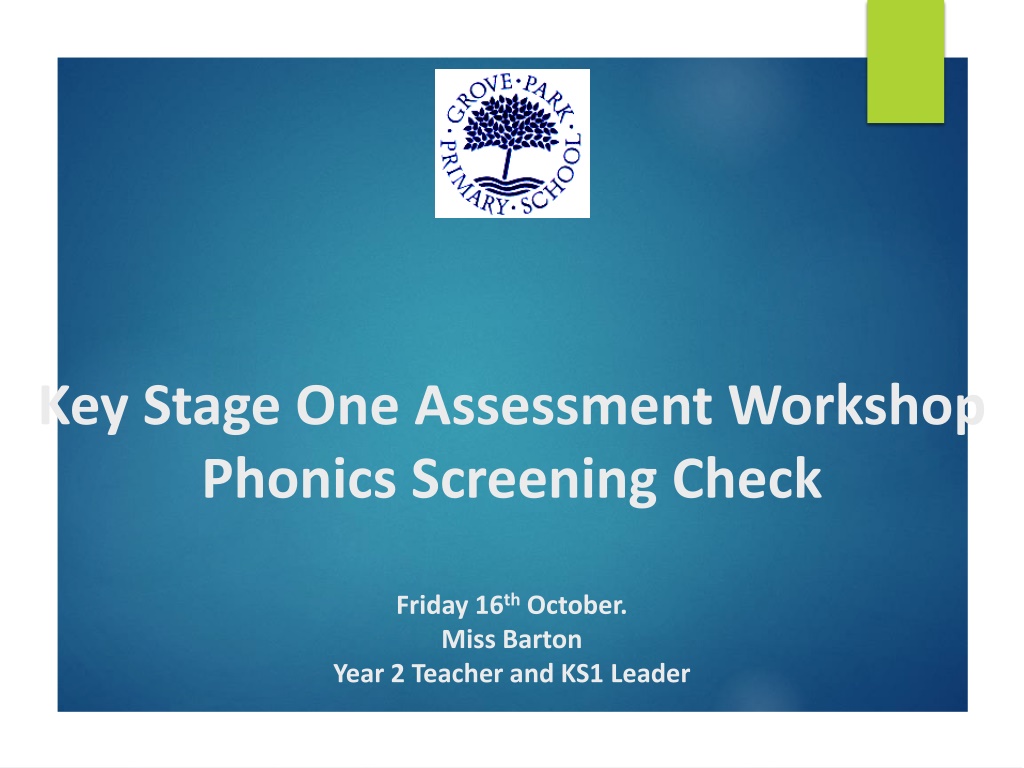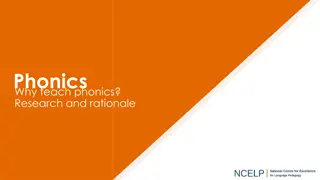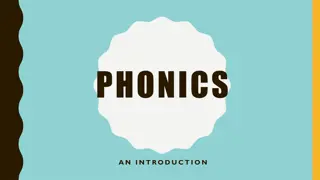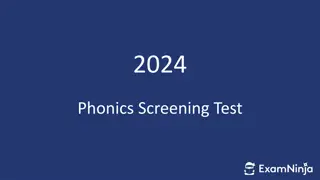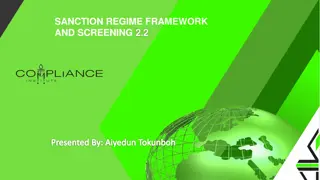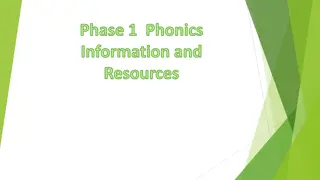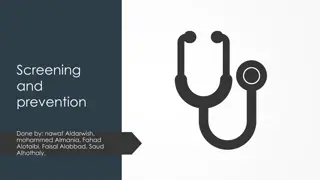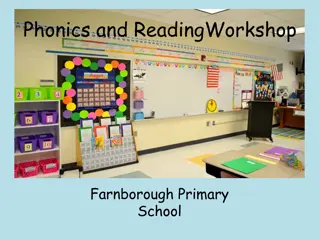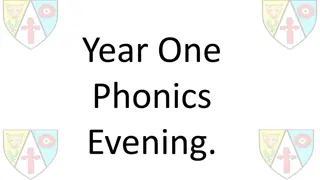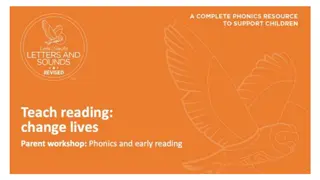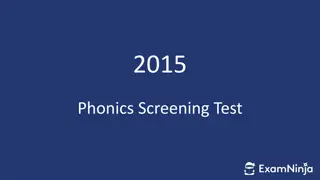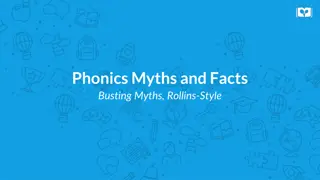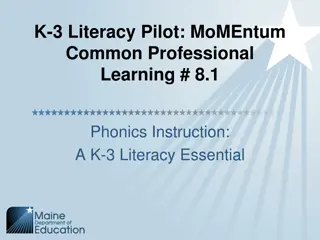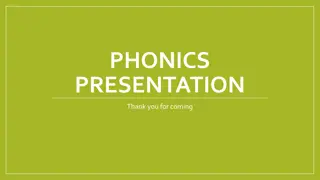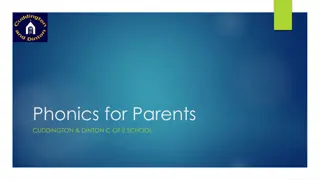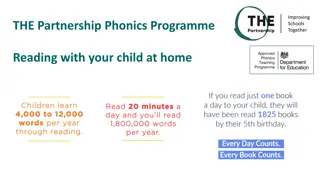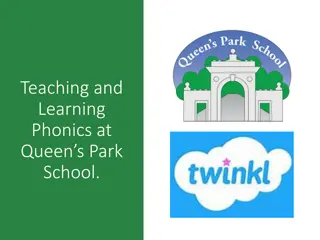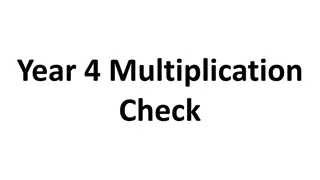Phonics Screening Check Overview for Year 2 Students
The Phonics Screening Check is a statutory assessment for Year 1 students that has been adapted for Year 2 due to Covid-19 disruptions. It involves reading a list of 40 words, both real and nonsense, to assess children's phonics skills. The check will take place in a quiet setting and aims to determine their ability to blend sounds and read words accurately. The check includes various types of words and children will not be aware they are being assessed. Results will be communicated to parents by the end of the Autumn Term.
Download Presentation

Please find below an Image/Link to download the presentation.
The content on the website is provided AS IS for your information and personal use only. It may not be sold, licensed, or shared on other websites without obtaining consent from the author. Download presentation by click this link. If you encounter any issues during the download, it is possible that the publisher has removed the file from their server.
E N D
Presentation Transcript
Key Stage One Assessment Workshop Phonics Screening Check Friday 16thOctober. Miss Barton Year 2 Teacher and KS1 Leader
What is the Phonics Screening Check? The phonics screening check is a statutory assessment for all children in Year 1. Due to Covid, the current Year 2 children will be taking the check this year, as they didn t take it in June 2020. The phonics screening check comprises a list of 40 words that children read one-to-one with their class teacher. There is no time limit but the phonics screening check would normally take approximately 5-10 minutes per child. The check will take place in a quiet area of the school. The children will not be made aware that they are taking part in an assessment.
When is the phonics screening check? The Year 2 phonics screening check will take place during the weeks commencing 23rdNovember and 30thNovember 2020. Any Year 2 children that do not meet the threshold will re-take the check with the Year 1 children in June 2021. By the end of the Autumn Term, you will receive an email to inform you of whether your child has met the threshold or not. The Year 1 phonics screening check will take place during the week commencing 7thJune 2021. The results for the Year 1 phonics screening check will be communicated with you in the end of year reports.
What will the children be expected to do? Children will be asked to read words (real and nonsense) aloud. They will be told that they can sound out before trying to say the whole word if this helps them. The check is divided into 2 sections and the words become progressively more challenging, a previous check included: yop, queep, farm, truck, girst, flute, index, portrait... The focus of the check is to see which sounds the children know and whether they are able to blend them in order to read a word.
What a lot of nonsense! The phonics screening check will be constructed of 20 real words and 20 nonsense words. The nonsense words will be identified with a picture prompt.
What will the check include? Simple CVC words for example the nonsense word vap Words with consonant digraphs such as chill Words with vowel digraphs such as week or hooks Words with adjacent consonants such as start or nonsense words such as jound Words containing split digraphs such as phone or plide Words with alternative spellings of phonemes such day and trains Non-words that can be pronounced in alternative ways for example veap Two-syllable words such as dentist or starling
How will the check be marked? For every word your child decodes correctly, they will be awarded 1 mark. They will then get a total score out of 40. For the Year 2 check, the threshold is marked at 32. In late June, the Phonics Screening Check threshold score will be published for the 2021 check. It will be communicated with you whether your child met the threshold or not. School-level results will be recorded and made available to the Local Authority and Ofsted for data analysis and monitoring. National results will be reported to track standards over time.
How can you help at home? Encourage your child to sound out or robot talk when reading or writing. Focus on spotting more complex sound patterns when reading e.g. Adjacent Consonants 2 consonants blending together e.g. drive Digraphs 2 letters making one sound e.g. cow Trigraphs 3 letters making one sound e.g. sure Split Digraphs (magic e) 2 vowels which are split by a consonant but still make 1 long vowel sound e.g.spine Practise reading polysyllabic and compound words by breaking them down into smaller parts e.g. starlight = star/light
How can you help at home? Encourage your child to practise decoding the new graphemes taught in school. Use the phonicsplaywebsite for games such as Buried Treasure and Picnic on Pluto Username: march20 Password: home Reading daily with your child. Your child s colour band book will match their phonics ability. Encouraging your child to read words from your shopping list, road signs etc to practise their phonics Mrs McGregor s Phonics Workshop: https://drive.google.com/file/d/1O0kU9LjEt_gavQhHpEEbJP7MQtCmt79G/view
